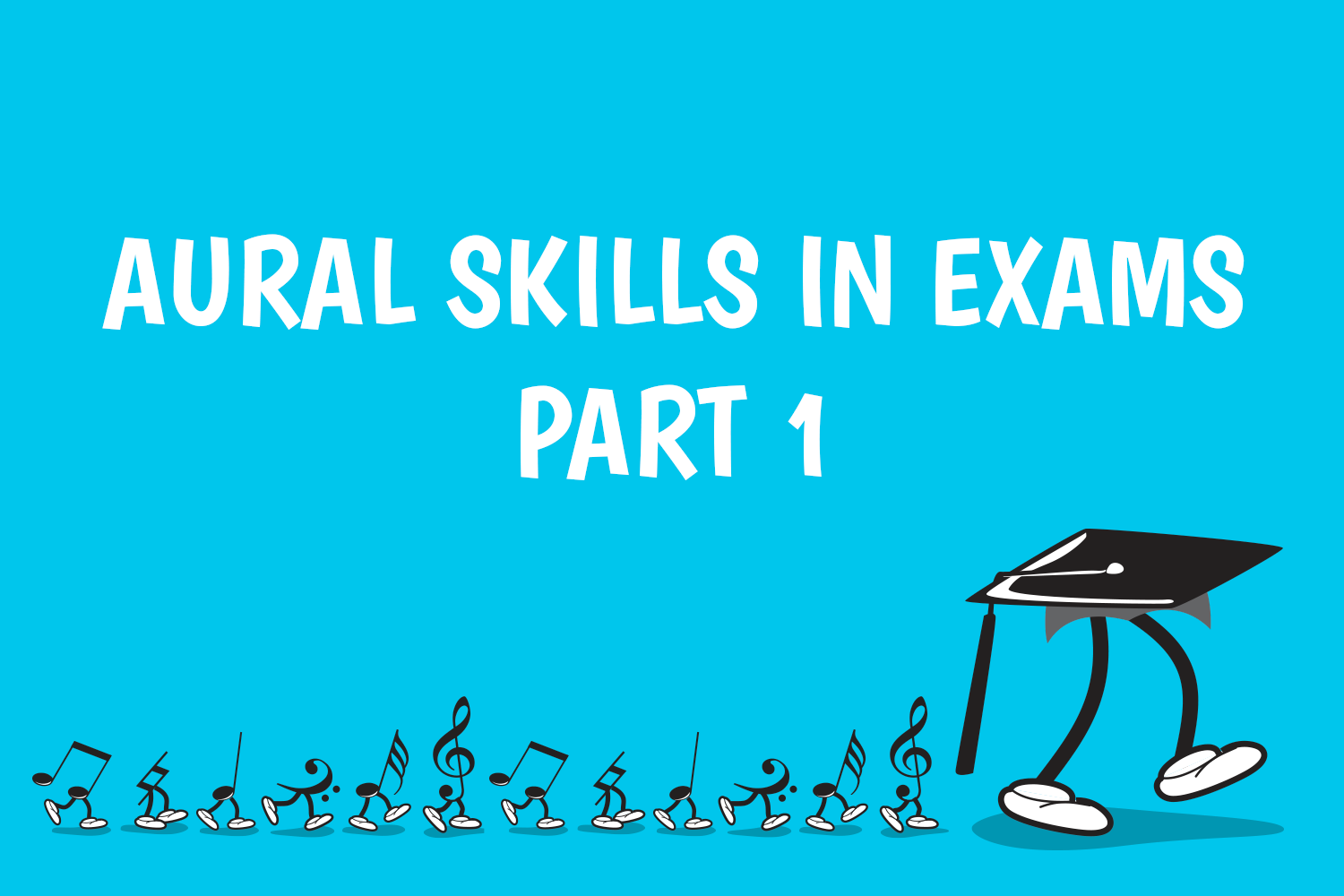Aural Skills in Exams: Part 1


A while ago I wrote a booklet containing tips, tricks and techniques which can be useful for those who find the aural aspect of music a bit more challenging. This booklet was only available for a very short time, and only as a promotional giveaway. So I thought it might be an idea to reproduce it as a 3-part blog.
I would like to thank the following people who have made invaluable contributions to this book/blog: Tami Gadir, Abe Cytrynowski, David McKay, Michelle Madder, Anna Lapinski, Elisha Keen, Elissa Milne, Caroline Kang and Anna Humberstone.
The Essentials
When it comes to aural skills, music students are often categorised into two groups: those with a naturally good ear, and those without. This polarisation of abilities is not very helpful! Every student is different, so it’s a matter of trying different techniques and seeing what works.
Before we get into the details of certain aural skills, these are the three essential elements of getting better prepared for the aural section of a practical exam:
Singing
Practising
Memorising
1. Singing
The most important, and often ignored element is the student’s ability to sing confidently. It doesn’t matter what instrument is being taught, the voice is an essential tool for developing an understanding of pitch, intervals, melody and much more. If a student cannot (or will not) sing, there are a number of exercises which can help them a lot. The first step is to figure out the reason why the student has trouble singing.
If a student seems unable to break out of a small range to reach high notes, they need to be taught to use their ‘head voice’. The action of yawning stretches and raises the soft palate, so trying a few yawns can help get the feeling of ‘space’ in the throat and this will help relax the vocal cords. Another exercise involves the student bending down so that their head is between their knees and singing through their range so they get a physical understanding of their head voice. This is great for kinaesthetic learners. A similar method is to lie down flat on the floor and to sing through the student’s range. The aim here is to change the student’s position in order to create an awareness of resonance through different parts of the body.
Many students, especially older ones, are just not confident enough to sing, which can either be related to a lack of singing experience, or their view that they are tone deaf, or have a ’bad voice’. These students need to start listening to themselves when singing. This may sound obvious, but it is often taken for granted, believe it or not! The main reason why people cannot pitch notes with their voices is because they are trying to make sound but not actually listening to that sound.
An excellent way of having students listen more carefully to their voices is to ask them to cup a hand over one ear while they sing. This amplifies the voice. They can then listen more carefully to what their voice is doing, rather than just guessing where the notes they should sing are. Remember, the key to singing is to listen.
Sometimes, boys whose voices have just broken, or are in the process of breaking may have a problem with confidence, and may also have trouble reaching higher notes. These students should not over-strain their voices. Help the student explore his new range by trying to sing scales in different registers and finding his comfortably lowest and highest notes. He should also be encouraged to ask the examiner to play excerpts an octave lower if required. Remember, encouragement is the key for regaining confidence after a boy’s voice has broken.
2. Practising
Like any physical activity, aural skills cannot be crammed, but must be developed with time and practice. Aural training should begin in the very first music lesson, and it should be seamlessly integrated into the learning of repertoire. For example, play each of the cadence points in their current sonatina, and ask them to identify it. Or break down the opening melody into intervals, and ask them to name each interval. There is no point in announcing to a student ‘ok it’s time to stop learning our pieces and do some aural practice now’. This will simply turn them right off!
If you incorporate aural activities every lesson, the student will not only be well prepared for the aural section of exams but will also be developing skills which will be useful for a whole lifetime of music!
3. Memorising
The last of the essentials for the exam is memorisation. Aural tests in AMEB exams are based on the student’s ability not only to recognise but also to memorise rhythms, metre, melodies, intervals and pitches. A way to increase the student’s memorisation ability is to give them shorter passages and then increase their length after the shorter ones are mastered. For example, if the student finds it hard to remember and then clap a two-bar rhythm, he/she must first be able to master a one-bar rhythm. Exercises like remembering and singing a melody can be even trickier as the student has to recall both melody and rhythm. I will discuss this more in Part 2.
So, in summing up, the essentials for the aural tests are:
1. Sing – which means listen
2. Practice – start early, don’t cram, use the repertoire for exercises
3. Memorise – start with smaller units, gradually increase
